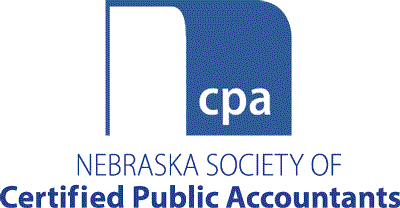The significant changes in accounting and reporting that were supposed to already be in effect were postponed due to the pandemic. That was the good news. The bad news is almost all changes were postponed to the same period—that is, periods ending on or after Dec. 15, 2021, or years beginning on or after Dec. 15, 2021.
So, here we are, already deep into 2021 and we haven’t yet had the time to review what is coming our way in just a few short months. The purpose of this article is to briefly review the coming changes in accounting and reporting that will impact nearly all practitioners, whether in public accounting or industry.
The first set of major changes comes in the form of SSARS 25, “Materiality in a Review of Financial Statements and Adverse Conclusions,” which goes into effect for preparations, compilations, and reviews for periods ending after Dec. 15, 2021. You can also early adopt for a client if you want to deal with this right now. While SSARS 25 only makes minor changes to the conduct of a preparation or compilation engagement, it makes major changes to the way most of us conduct a review engagement! The most significant of those changes are as follows:
- Establishes a definition of “limited assurance” as “a level of assurance that is less than the reasonable assurance obtained in an audit engagement but is at an acceptable level as the basis for the conclusion expressed in the accountant’s review report.” I know this creates a lot of excitement for you but, believe it or not, the term hasn’t been defined before and that creates issues if you ever find yourself in litigation relating to what exactly our job is in a review. This is a good thing for us.
- Defines the term “professional skepticism” as “an attitude that includes a questioning mind, being alert to conditions that may indicate possible misstatement due to fraud or error, and a critical assessment of review evidence.” The standard shockingly requires that we conduct our review utilizing professional skepticism. I certainly realize that most of us already utilize professional skepticism in our reviews of client financial statements, but, as above, it has never been laid out in the review guidance as a mandate.
- Here is where it starts to get fun. Paragraphs 19 and 20 of clarified Section 90 of the AR-C read like this:
.19 – The accountant should determine materiality for the financial statements as a whole and apply this materiality in designing the procedures and evaluating the results obtained from those procedures..20 – The accountant should revise materiality for the financial statements as a whole if the accountant becomes aware of information during the review that would have caused the accountant to have determined a different amount initially.
If you are an auditor, these requirements should sound familiar. They are pretty much the same. Prior to doing anything substantive in the review, you need to calculate materiality, both quantitatively and qualitatively, document it, and then show its “linkage” to the review procedures performed. I know some practitioners who do this currently, but not many. Expect this to add some significant time to your reviews.
There is a new review report! No, it’s nothing like the new audit report to be discussed next but there is a change in every single report. A single sentence added to the Accountant’s Responsibility section reads:
“We are required to be independent of XYZ Company and to meet our other ethical responsibilities, in accordance with the relevant ethical requirements related to our reviews.”
The second area of major change deals with SAS 134, “Auditor Reporting and Amendments, Including Amendments Addressing Disclosures in the Audit of Financial Statements,” which completely rewrites our audit report for audits of periods ending on or after Dec. 15, 2021. This can also be early adopted. Some of the significant changes brought by this standard include:
- The opinion section is presented first. Right out of the gate we say what we did and how it came out. I personally think this will cause many users to discard the remainder of the report, but that’s just my opinion.
- Enhanced auditor reporting relating to going concern. The audit report will state that management has the responsibility to evaluate going concern and the auditor has the responsibility to conclude on going concern.
- An enhanced description of the auditor’s responsibilities. I am a fan of one part of the new wording that, in essence, says an auditor can’t guarantee that the financial statements are free from material misstatement. Being a veteran of evaluating malpractice cases for the defense, I can tell you that many users believe an audit report that is clean is a guarantee of the statements’ accuracy. This is a good add for the profession.
- The ability to add key audit matters (KAMs) directly to the report. The auditor can be engaged by the client to add key audit matters to the report.
Finally, the leasing standard goes into effect for privately held businesses for years beginning after Dec. 15, 2021. You have probably heard of the standard by now as it was in exposure draft mode from 2010-2016 and finalized in 2016. You probably know by now that it requires all leases that meet a relatively squirrely definition of a lease to be capitalized, whether they are operating or finance leases (new term for capital leases). You probably also know by now that the standard has no real impact on the income statement but can have a massive impact on the balance sheet. I believe it to be a great idea to calculate the lease liability impact of this standard as of Dec. 31, 2021, so you can inform your client or employer (and, in turn, their lenders or investors) as to what the impact of this statement will be when you publish the Dec. 31, 2022, financial statements. No surprises should be your adoption year goal for the leasing standard.
Well, there you have it. A lot more stuff to be on the lookout for as of the end of 2021! I look forward to seeing you in CPE this year to further discuss these fun times (and fun standards).










